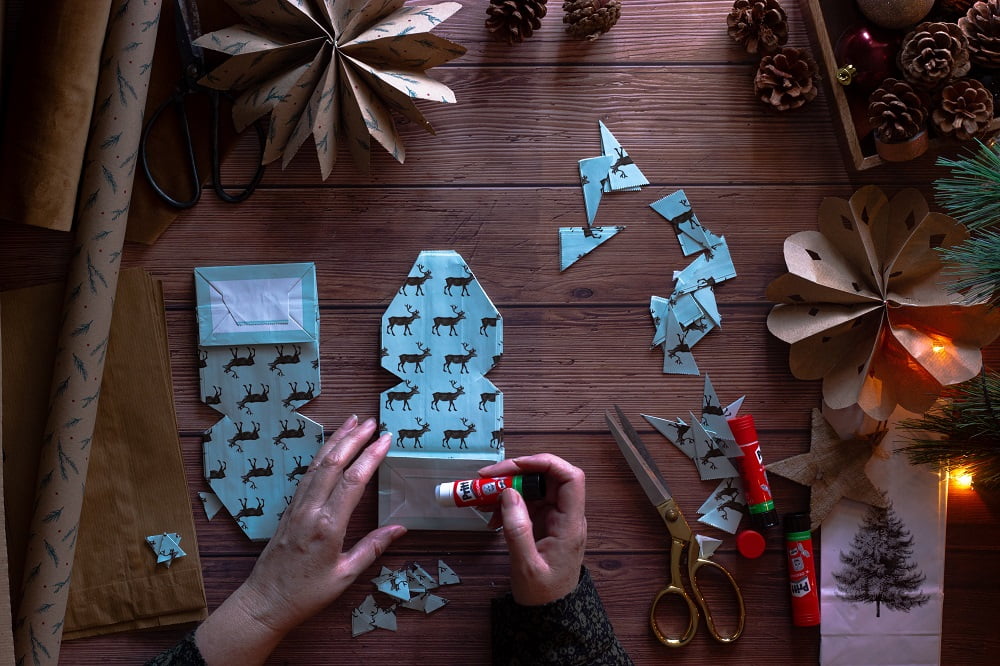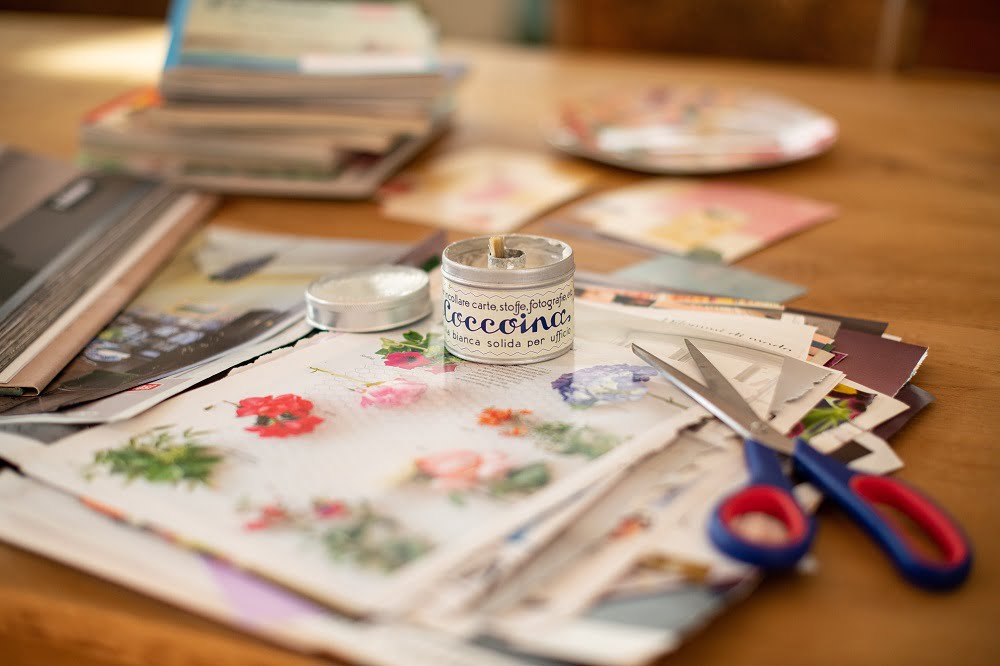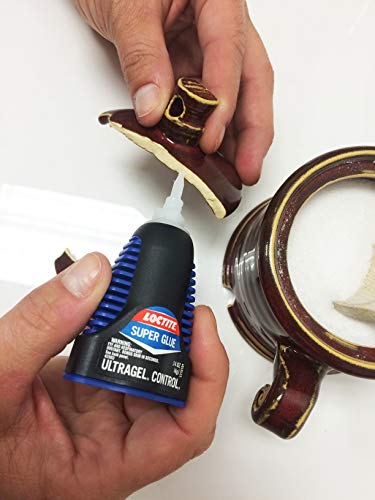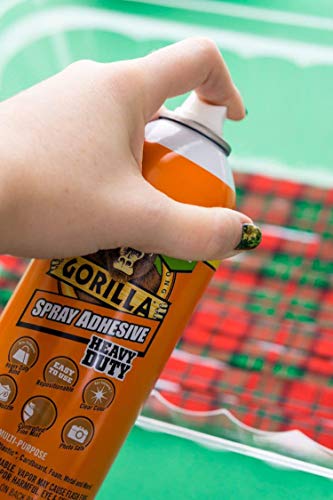Most of us are all too familiar with glue, especially the ones we used for school projects. But not many people know about the different types of glue out there.

Glue is one of the oldest-known substances available to man. In fact, there are several instances of natural glue-like substances in the world - from tree sap to manmade glue created by mixing the bone extracts of animals with other substances.
In our modern world, we use a highly processed version of glue that is mostly made in factories. It is still required for everyday jobs like carpentry, plumbing, shoe-making, and many others.
In this guide, we will dive into the different types of glue you can find today. We will also talk about the uses and popularity of these glue variants.
So, without further ado, let's begin!
Different Types Of Glue

We don't usually think about glue on a daily basis - that is, until we need to use it. This seemingly mundane substance is extremely useful; it (literally) keeps things from falling apart. While most of us are familiar with white glue (used for arts and crafts) and hot glue (used for more powerful adhesion jobs), there are over a dozen more varieties in the world.
-
White Craft Glue
When you think of the word “glue,” this is probably one of the first images you see in your mind. The white, lightweight, water-based glue is most commonly found in every artist and crafter's kit. It helps join porous materials together like paper, cardboard, sheets, and even some types of cloth.
This kind of glue has almost zero toxicity, making it ideal for children to use. It is the most common type of glue found in schools and arts and crafts stores. Moreover, it is easy to clean up after an accidental spill. It does not stick to your clothes or even your skin in a way that is impossible to remove, thereby making it a safe option for kids.
An important characteristic of this glue is that since it is water-based, it requires at least 24 hours to set completely. During this time, the objects being glued must be kept tightly together. Once a period of time has passed, the strength of this glue can be appreciated.
That being said, most projects involving white craft glue take just a couple of minutes (or an hour at max) to dry. It goes without saying that white craft glue is not useful in applications that require water resistance.
-
Wood Glue
Wood glue, as the name suggests, is designed to act as an adhesive between wooden pieces or wooden surfaces. It is typically yellow and is made of the same vinyl acetate polymers as white craft glue. However, wood glue is also available in white or transparent shades if a specific kind of work requires it.
Wood glue is far more rigid than white craft glue - its inherent rigidity makes it easier to sand. It is more waterproof than craft glue, yet, it cannot be used in applications that require complete water resistance.
Polyurethane glue, epoxy, and hide glue are different types of wood glue. The various types can be used for different purposes, so it is essential to read the labels before purchasing wood glue for specific jobs. The different types of wood glues work best with specific types of wood, so be sure to research this thoroughly before purchasing.
Some of the primary characteristics of wood glue are its rigidity, superior strength, moisture resistance, and inherent gap-filling abilities. Wood glue is used to make beds, furniture, decorative wooden items, tables, chairs, etc.
Wood glue requires a couple of hours to set completely but is exceptionally reliable once set. It is a must-have for any type of carpentry work.
-
Fabric Glue
Although white craft glue is sometimes used to hold fabrics together, this job is better suited for fabric glue. Polyvinyl acetate (PVA) is a popular type of white fabric glue often used for mending upholstery or making clothes.
Fabric glue stays flexible even after it dries completely, making it ideal for clothes and other fabrics. Moreover, it is waterproof, enabling you to wash and launder the fabric without worrying about the glue (or pieces of fabric) coming off.
Depending on what kind of fabric you want to stick (and some other factors), there are various types of fabric glues to choose from. While most fabric glues resemble white craft glue, others come in a webbing form. These have to be melted before use. They are excellent for DIY projects and are very popular amongst people who enjoy making their own clothes or giving them a new spin.
-
Super Glue
Super glue is also known as Cyanoacrylate adhesive. This is yet another common type of glue that most of us have used for various adhesive projects. The glue is known to dry within seconds, or sometimes minutes, depending on the objects being glued together. However, once it is dry, it becomes transparent and is extremely rigid and waterproof.
This glue is called 'super glue' because it works within seconds and is almost impossible to 'unstick' once it is dry. Joining materials like wood, leather, ceramics, plastic, glass, and even metal is made possible with the help of super glue.
The chemical compound Cyanoacrylate is known for its quick-drying and' super bonding' abilities. When applied on two dry surfaces and held together tightly, the objects can be stuck together within seconds - and will not come off, even with extreme force or pressure.
Super glue is very versatile and is often used by individuals to glue together all kinds of objects - toys, broken handles, furniture, plastic, etc. However, it dries very quickly and can end up sticking your fingers together, so be very cautious when using it!
-
Hot Glue
Hot glue is most commonly found in 'guns' or 'hot glue guns' and has become a huge rage, especially on social media. Hot glue guns contain heating elements that efficiently melt a solid form of glue before ejecting it from a 'gun.' They are typically used for DIY projects and 'hacks,' hence, their rising popularity.
The 'glue' comes in the form of long, solid sticks that look like glow sticks. These sticks are inserted into the gun. On pressing the 'trigger,' the glue stick is melted and squeezed out - this can be used for various projects like arts and crafts, handiwork, wood and carpentry work, etc.
Once the glue dries up, it returns to its solid state. This is what effectively holds the materials together. Hot glue is very tough and rigid and has a variety of uses. Its ease of use, quick-drying abilities, and high strength are what make it such a popular tool. In fact, hot glue can be used to stick almost everything except metal.
One of the most unique and fascinating applications of hot glue is the ability to form patterns and textures with it. Using the 'gun' as a tool, squeeze the hot glue in patterns of your choice, adding glitter, colors, beads, and stickers to create a fun DIY item. That being said, it is not safe for children and is best used under adult supervision.
-
Pressure Sensitive Adhesive (PSA)
Pressure Sensitive Adhesives are found in two primary forms - glue dots and sheets. They can be used for a multitude of projects such as simple sticking or adhesive jobs (sticking notes to fridges instead of using magnets, sticking photographs on walls).
PSA is used for various lightweight objects like paper, glass, plastic, and even metal.
-
Epoxy
More often than not, epoxy glues are two-part systems sold as a single unit. The first part of the glue contains resin, while the second part contains a hardener. There are different types of epoxy glues available for various purposes - multi-purpose epoxy or epoxy for marble, wood, plastic, etc.
The composition of epoxy varies depending on its uses. A certain kind of epoxy works best for typical household adhesion jobs, while a different type would be better suited for more extreme or harsh outdoor environments.
This kind of glue has superior cohesive strength, and durability and has excellent gap-filling abilities. It has the ability to penetrate microscopic holes and join surfaces together with superior strength and hold. The mixture generally needs to be prepared according to the kind of surface you wish to bond. Depending on the application, the proportion of the mixture varies.
Epoxy has the inherent ability to cure fast and also exhibits a range of flexibility, making it ideal for all kinds of bonding.
-
Spray Glue
Spray glue is a contact, multi-purpose adhesive that is intended to be applied on large surface areas. As the name suggests, this type of glue comes in a spray bottle, making it convenient to spread on large surfaces without hassle. One of the most important things to keep in mind when applying this glue is to use it in a well-ventilated room.
Depending on the material it is sprayed on, the glue can exhibit varying degrees of bond and durability. It can be used for various household fixes, craft projects, and even office applications. The glue works efficiently with paper, fabrics, foam boards, plastic, felt, and more.
Spray glue is often used to adhere photos to foam boards; however, it can be used for various other adhesions.
-
Polyurethane
Polyurethane is a multi-purpose adhesive that comes in both one-part and two-part systems. The substance is used in various types of glues and adhesives but is also sold under its generic name.
This glue is marine grade, so it is completely waterproof and withstands exceptionally high tensile strength. It can be used to bond a multitude of materials from wood to rubber, ceramics, glass, plastic, concrete, and steel.
That being said, polyurethane takes a few hours to cure and build strength. Typically, it takes about six to eight hours to completely bond two surfaces. However, once it is cured, the strength and durability of the object are near impossible to break. Dried polyurethane glue can be sanded with ease.
Although this glue is extremely strong, it can be removed using various solvents like acetone and mineral spirits.
-
Glue Pen
Glue pens are commonly used in households as well as for children's art and craft projects. They are available in small tubes and come in a 'pen' form that is convenient to use and mess-free. Upon drying, they form a clear, transparent adhesive.
Glue pens generally come with a variety of tip sizes that allow users to fill in small or large cracks and gaps. The glue is quick-drying and leaves a clean finish once it is done. These glue pens can be super convenient for everyday adhesion jobs, but care must be taken to choose the right tip for the right job.
-
Glue Dots
As the name tells you, glue dots are solidified adhesives that come in different forms. You can buy them in rolls, sheets, or even dispenser forms. They are incredibly convenient to apply and are removable, making them ideal for use around the house.
These glue dots are often used for minor sticking projects - sticking photos, sheets of paper, lightweight plastics, etc. As they do not contain excessive rigidity or strength, they are not appropriate for more heavy-duty sticking jobs like sticking metal, heavy plastics, ceramics, steel, wood, etc.
That being said, you may apply glue dots on any of the surfaces mentioned above to stick lightweight objects on them (such as paper). Keep in mind that these dots are easy to remove and can only create long-lasting bonds for lightweight objects.
Many people often use these glue dots to create patterns or texture, adding dimension to an otherwise plain, mundane surface.
-
Glue Sticks
Glue sticks are among the most common types of glue found in most homes, schools, and art centers. They are used for minor sticking projects such as joining sheets of paper, foam, and sometimes even fabric. However, in many cases, the quality of the glue is not very high. Thus, you may find earlier glued objects coming loose after some time.
Glue sticks come in a standard, cylindrical roll and are found in most arts and crafts kits. They can be used by children safely and will not stick to the skin. It is also easy to loosen the glue by warming it or washing the surface with warm water and soap.
-
Rubber Cement
Rubber cement is made of elastic polymers such as latex and is typically mixed in solvents (acetone, toluene, hexane, or heptane). There are different types of rubber cement available in the market, depending on your specific requirements.
Like many other types of glue, certain rubber cement may be multi-purpose, while others may be designed for specific materials only. This glue is a type of drying adhesive, which inherently gives it the quick-drying property, fast-evaporating and solidifying on drying. Once it dries, it can form a rigid and tough bond that is flexible.
-
Glitter Glue
Glitter glue is immensely popular amongst children, thanks to its colorful and glittery appeal. It is most commonly used in arts and crafts projects by kids but can also be used by adults to tap into their creative sides. This glue typically comes in liquid form in tubes, which can be squeezed and applied on any surface.
Glitter glue is quite similar to glue pens in the way that they are used. On drying, it leaves a semi-translucent, glittery, and slightly colored appearance. However, these glues may come in a metallic finish as well, making them very versatile and ideal for DIY projects.
The slender, cylindrical packaging makes this glue very easy to handle, especially for children. It dries quickly and is generally nontoxic. The best part about this glue is how easily it can be removed using any common solvent. In some cases, the glue can even be peeled off.
Although glitter glue is very cheap, it is easy to make at home using ordinary craft glue. Mixing colors and glitter in a container will create glitter glue effortlessly. It can be a fun project to make the glue at home with kids, and using the glue is even more fun because of its vivid colors.

The Right Way To Apply Glue On Any Surface
Although there are more than a dozen types of glue, their applications are relatively similar. Depending on your project requirements as well as your budget, you can purchase different brands and types of glue. Here are a few things you need to know about correctly applying glue.
-
Clean The Surface
No matter what the surface is - paper, wood, plastic, etc., it is imperative to clean it before you begin. Any dirt, dust, or moisture on the surface can inhibit the glue from bonding properly and sticking to the two surfaces. Moreover, if there is dirt or stains on the surface, and you use transparent glue, the dirt will show up underneath, ruining the aesthetics of your project.
-
Keep A Cloth Or Cardboard At Hand
No matter how careful you try to be, accidents can happen. Glue can be very messy, especially the kind that is quick-drying. Ensure that you keep a disposable cloth or a piece of cardboard at hand when you are working with any kind of glue. This will help you clean up any mess you make.
You can also keep a solvent close to you to use in case of accidental spills on your skin or clothes. Fortunately, most glues will come off relatively quickly with the help of a suitable solvent.

-
Work In A Well-Ventilated Room
While many types of glue (such as craft glue) are safe to use in a closed room and are nontoxic, others may not be so. It is best to work in a well-ventilated space when working with glue so that you don't breathe toxic fumes.
In case a child is playing with glue for DIY projects, it is crucial always to keep them under adult supervision. Children are prone to putting glue in their mouths or getting it on their hair and skin. Although it is not hazardous, it can be challenging to remove the glue from their skin and hair. Ingested glue can be dangerous, so be sure to stay safe.
-
Read The Directions
Not many people think of reading instructions when using glue. However, this can result in mistakes if the glue is misapplied. Different types of glue (and different manufacturers) have different instructions on how to use their glue.
It is best to read the manufacturer's instructions when using any new type of glue, especially those that need to be mixed (like epoxy).
-
Close The Bottle After Use
Although children are more prone to making this error, many adults do it too. Often people leave their containers or tubes of glue open while using them. However, this can effectively weaken the adhesive and cause it to spoil. Ensure that you always close the lid or cap while using glue and store it in a cool, dry place when you are not using it.
Conclusion
With so many different types of glue available in the market, how do you know which one you should buy?
Well, the choice is simple. Depending on your requirements, you will have to choose between the different types of glue, while keeping their applications in mind. Ensure that you research and determine which glue is best used for specific projects to make better and long-term decisions.
We hope our guide helped you learn something new and interesting about the different types of glues. Always stay safe when using any type of adhesive and use the right kind for specific jobs.
Until next time!
Related Articles
The Difference Between Epoxy & Super Glue
How to Remove Gorilla Glue From Skin Safely & Easily
15 Easy DIY Tricks on How to Get Stickers Off Glass Rapidly
11 Best Permanent Fabric Glues
11 Best Glue For Paper & Paper Mache
10 Best Ceramic and Porcelain Glue
11 Best Glue for Polypropylene
How To Glue HDPE 101 + Best HDPE Adhesive
Polyurethane Glue 101 | All You Need to Know
Gorilla Glue vs. Super Glue | Strengths, Weakness + Winner?
9 Best Glue For Hardwood Floors
7 Best Adhesive For Acoustic Foam
